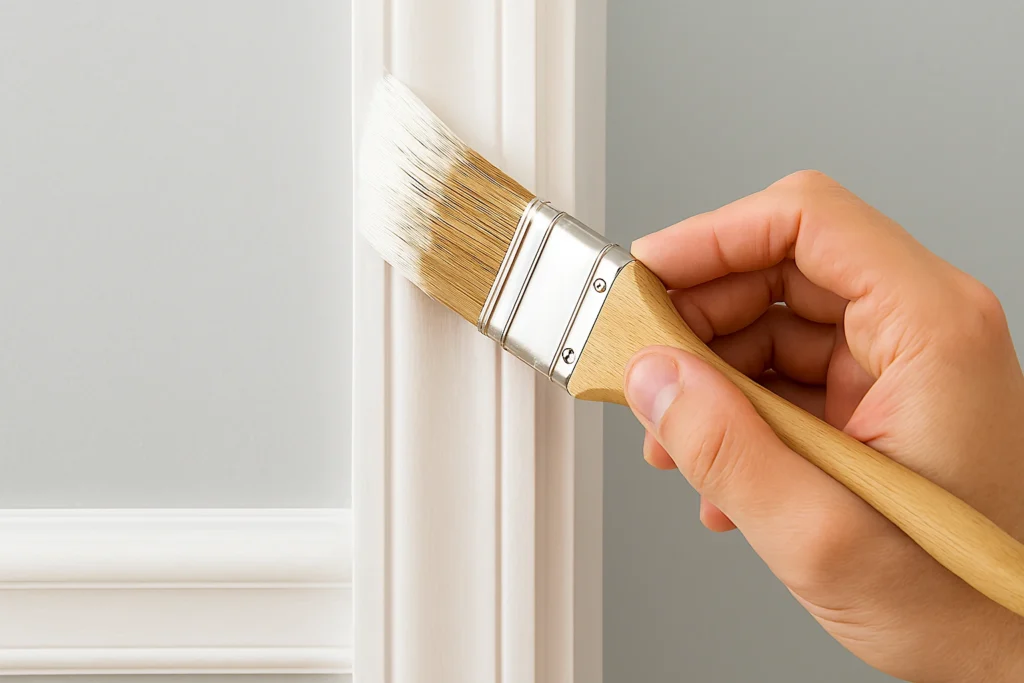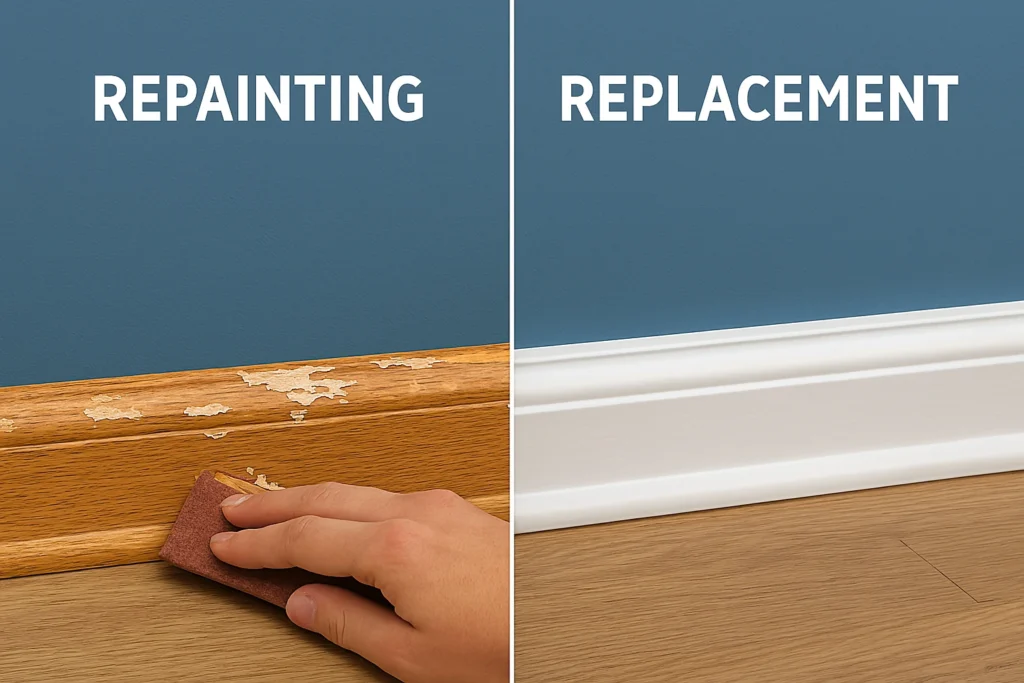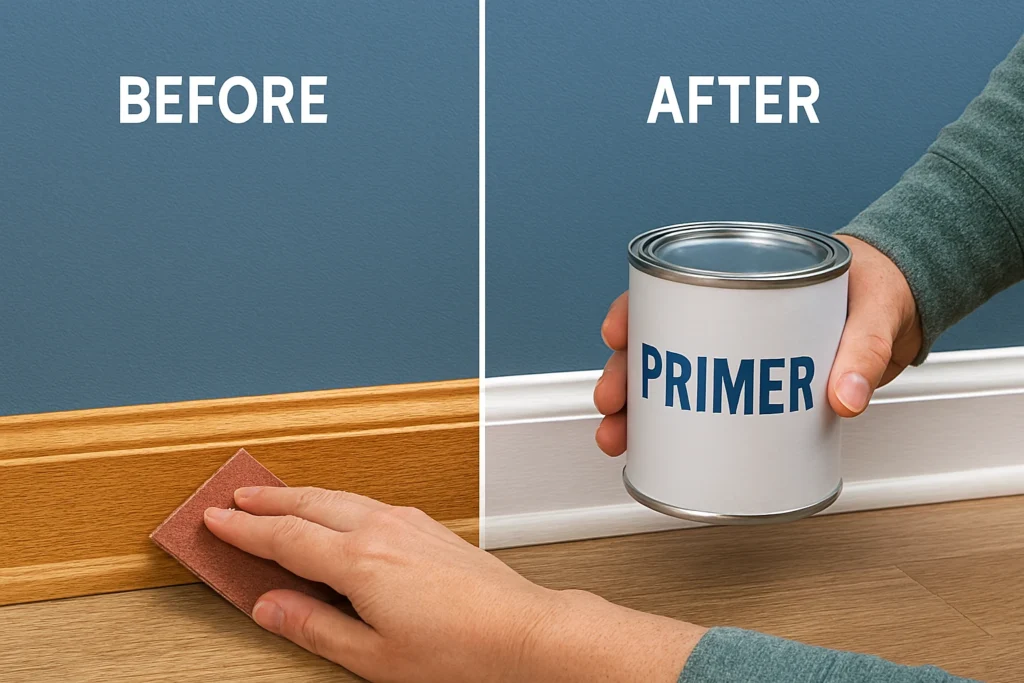When it comes to home painting projects, trim often makes or breaks the entire look. A crisp, clean trim can make walls pop and elevate your space instantly. In this guide, we’ll share pro tips for trim painting, covering everything from tools to techniques so you can achieve professional-level results at home.
How to Paint Trim Professionally
The first step to learning how to paint trim professionally is preparation. Trim collects dust, oils, and old paint, so cleaning and sanding are essential.
Steps to Get Started
- Clean thoroughly: Use a damp cloth or mild cleaner to remove dirt. For more on prep work, see how to clean walls before painting.
- Sand lightly: Smooth surfaces ensure better paint adhesion.
- Prime properly: A high-quality primer helps your paint grip and prevents stains from bleeding through.

Professional painters also recommend using angled brushes for precision. If you’re new, investing in the best paint edging tool can help you achieve straight lines without tape.
The Easiest Way to Paint Trim
The easiest way to paint trim comes down to minimizing mess and maximizing control.
- Use painter’s tape to protect walls and create sharp edges. See the best painters tape to avoid peeling off fresh paint.
- Work in sections. Don’t overload your brush, apply thin, even coats.
- Cut in first. Always paint trim before walls or ceilings for efficiency.
If you’re also painting ceilings, check our guide on the best way to paint a ceiling for a smooth workflow.
Painting Window Trim: A Detailed Approach
Painting window trim requires extra attention since it’s prone to drips and tight corners.
- Use a smaller angled brush for corners.
- Tape off the glass edges with precision tape.
- Apply thin coats to avoid paint runs.
For stubborn finishes, learn how to remove paint with steam before repainting.
Painting Over Trim vs Replacing It
Many homeowners ask if painting over trim is worth it or if replacement is better. The good news: painting is usually enough, especially with quality primers and durable finishes.

However, if the trim is damaged or heavily layered with old coats, repaint trim only after proper sanding and priming. If it’s beyond repair, replacing might be a smarter long-term investment.
Choosing the Right Trim Painter Tools
A true trim painter relies on the right gear.
- Angled sash brushes for clean edges.
- Foam rollers for smooth finishes on wide trim.
- Drop cloths and ladders to keep your workspace safe, see the best ladder for painting.
For wood-based surfaces, check out the best paint for wood before buying your finish.
Best Wood Trim Paint Options
When selecting wood trim paint, durability and sheen are crucial.
- Semi-gloss: Easiest to clean and long-lasting.
- High-gloss: Adds dramatic shine but highlights imperfections.
- Low-sheen: Suitable for older trim with uneven surfaces.
For guidance, see painted wood waterproofing to protect your trim in moisture-prone areas.
How to Repaint Trim the Right Way
If you’re planning to repaint trim, follow these steps:
- Clean and sand to remove dirt and smooth rough edges.
- Prime with the best drywall primer or a wood-specific primer.
- Apply paint in two coats. Thin, even layers prevent drips.
- Let it cure. Allow at least 24 hours before heavy contact.

If you’re short on time, here are some tips to make paint dry fast.
Final Words
Painting trim might seem like a small detail, but it has a big impact on the overall look and feel of your home. With the right preparation, tools, and techniques, anyone can achieve crisp lines and a professional-quality finish. Whether you are tackling baseboards, doors, or window frames, following these pro tips for trim painting ensures lasting results that elevate every room.
Remember, patience is key, clean, sand, prime, and apply thin coats for the best outcome. The effort you put into your trim will highlight your walls, ceilings, and décor, giving your space a polished and refreshed appearance.
If you’re ready to transform your home, start small with a single room and build confidence as you go. The right approach will make every project easier, whether you’re painting over old trim, refreshing window frames, or selecting the perfect wood trim paint.

Leave a Reply